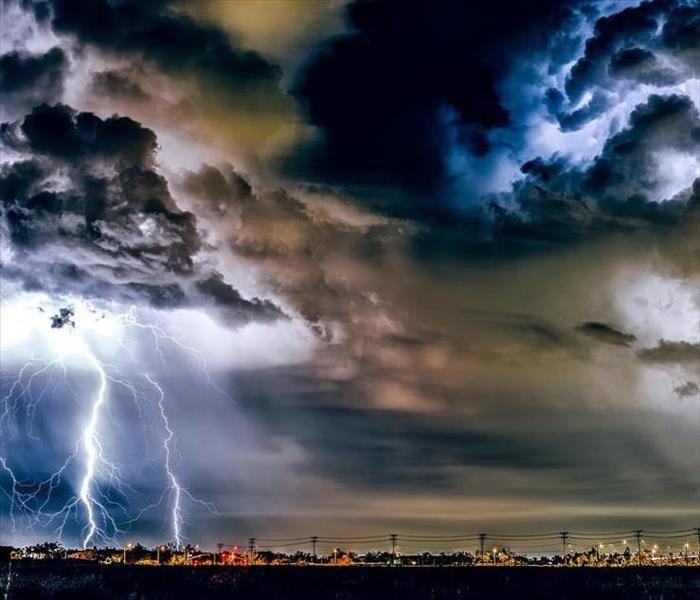Want to learn more about a few types of storms?
10/5/2020 (Permalink)
We usually hear about thunderstorms, tornadoes, and hurricanes, or tropical storms. But do we really understand what they are? Below we’ve gathered information from Britannica.com on the storms mentioned above to give you a better understanding of what’s happening when you experience them
Thunderstorm, a violent, short-lived weather disturbance that is almost always associated with lightning, thunder, dense clouds, heavy rain or hail, and strong, gusty winds. Thunderstorms arise when layers of warm, moist air rise in a large, swift updraft to cooler regions of the atmosphere.
Tornado, a small-diameter column of violently rotating air developed within a convective cloud and in contact with the ground. Tornadoes occur most often in association with thunderstorms during the spring and summer in the mid-latitudes of both the Northern and Southern Hemispheres.
Tropical cyclone, also called typhoon or hurricane, an intense circular storm that originates over warm tropical oceans and is characterized by low atmospheric pressure, high winds, and heavy rain. Drawing energy from the sea surface and maintaining its strength as long as it remains over warm water, a tropical cyclone generates winds that exceed 119 km (74 miles) per hour. In extreme cases, winds may exceed 240 km (150 miles) per hour, and gusts may surpass 320 km (200 miles) per hour.
We hope that information brings a little clarity into thunderstorms, tornadoes, and hurricanes, especially since we’re in hurricane season now. Speaking of which we are a part of a national SERVPRO storm team whose members respond to disasters nationwide. From hurricanes to wildfires, SERVPRO storm teams are always prepared to respond to major catastrophic events. SERVPRO's large-loss response is uniquely qualified to handle any disaster. We are prequalified, experienced, and strategically located across the United States to respond to any loss. When an event comes to devastate a community, SERVPRO's goal is to be instrumental in restoring the community the best we can. We are here to help, so give us a call at 706-965-7378!





 24/7 Emergency Service
24/7 Emergency Service
